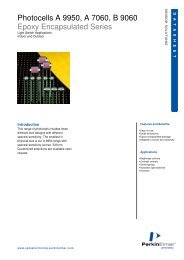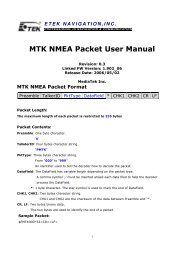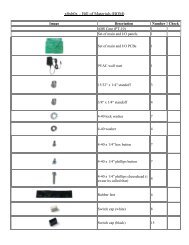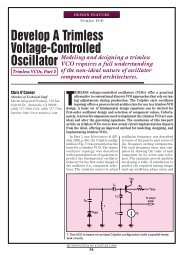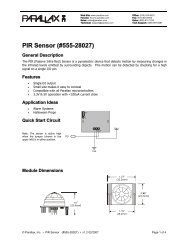Microstrip Patch Antennas for Broadband Indoor Wireless Systems ...
Microstrip Patch Antennas for Broadband Indoor Wireless Systems ...
Microstrip Patch Antennas for Broadband Indoor Wireless Systems ...
Create successful ePaper yourself
Turn your PDF publications into a flip-book with our unique Google optimized e-Paper software.
6.3 RECTANGULAR BROADBAND ANTENNA<br />
L4<br />
W4<br />
W1<br />
W<br />
Feed Location<br />
W2<br />
L<br />
L1<br />
L2<br />
Fig 13: <strong>Broadband</strong> using Rectangular <strong>Patch</strong>es<br />
The parasitic patch method was chosen because its mechanism of operations is<br />
fashioned similar to the parasitic ring but without the restrictions suffered by the previous<br />
method. In this method, instead of using parasitic rings, parasitic patches of similar<br />
dimensions are placed around the base fed-patch. Operation of the parasitic are same as<br />
the base patch as in the length of the parasitic patch determines the resonant frequency<br />
and the width sets the bandwidth. The fig-13 shown above is a typical topographical<br />
layout of a four parasitic element patch antenna. It is important to note that the parasitic<br />
element dimensions are not identical to each other. By changing individual dimensions it<br />
is possible to tune the antenna to achieve the best possible broadband solution. It is<br />
important to keep in mind that, it is hard to notice the difference caused by altering the<br />
dimensions of one parasitic element. But rather, all four elements need to be altered<br />
together in a logical manner in order to achieve the overall broadband solution.<br />
Initially when designing the antenna, all four parasitic elements had identical<br />
dimension as the base patch. Subsequently the lengths of the parasitic elements were<br />
altered until the required resonant frequencies were achieved. It soon became apparent<br />
due to the addition of parasitic elements, the feed location needed to be changed in order<br />
to provide the optimum input impedance match. Further research suggested this issue<br />
could be resolved by shifting the feed location towards the bottom edge of the antenna [4,<br />
pg 109]. The effect of shifting the feed location 3mm closer can be seen in fig 13. The<br />
appropriate smith chart of the above occurrence can be found in Appendix-E.<br />
W2<br />
L3<br />
15




